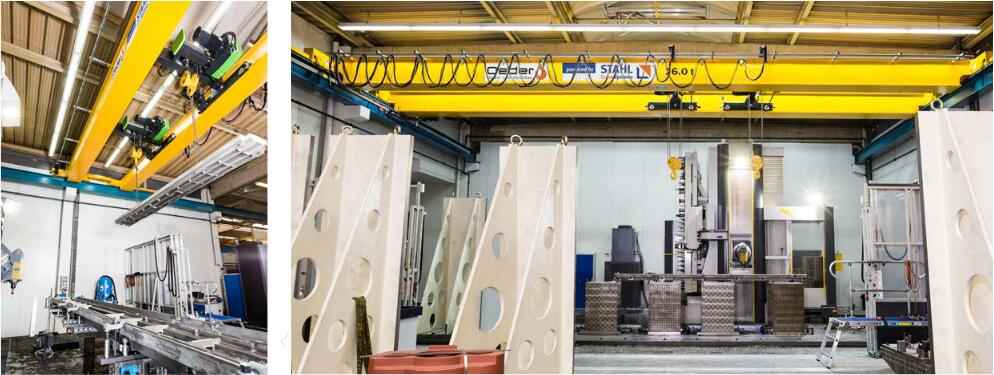Installing or upgrading a crane system in a factory floor with limited space is a complex project. Although we have a lot of experience, we will treat every request from customers carefully. This case comes from a mechanical engineering company in Germany. Due to the need to handle heavier components, the mechanical engineering company needed to upgrade its overhead lifting capabilities. So it turned to a local crane company for a completely new crane system. By analyzing this case, we hope to learn from the experiences of other companies and also popularize the process of customizing low-clearance overhead cranes for customers. This will help us communicate effectively with our customers.

In August 2015, the German engineering company commissioned a new moving column milling machine that can work with an accuracy of 0.017mm over a 10m range, with the new investment enabling the company to machine larger and heavier components. But as a result, a new crane was needed to lift these larger, heavier products into the new milling machine. With the upgrade, they would need to lift the weight to 16 tonnes instead of 5 tonnes and also be able to travel on existing crane runways.
With these weight requirements and limited clearance in mind, Crane Company was commissioned to produce a custom low headroom crane with a unique design.
While the limited clearance between the crane runway and the ceiling plays a role, the lower edge of the hook must also be dimensioned so that it does not collide with the milling machine’s spindle motor.
The key points for this system were definitely the restricted installation conditions and the inability to reinforce the existing crane runway.
The company supplied bespoke cranes with a clearance of just 943mm from the upper edge of the wire rope hoist to the lower edge of the hook, taking advantage of lift heights of up to 236mm below the crane runway and still being able to cope with the limited space above the crane. Crane runway.
Their solution is based on many non-standard designs that are not possible with standard cranes. The crane is equipped with two compact 8 ton wire rope hoists. They had to design a special structure for the crane bridge.
On this crane, two wire rope hoists with modified trolleys operate on tracks installed within the bridge. Only this feature, combined with changing the distance between the bogie end frames, made it possible to build such a compact crane.
The load of the system is distributed to the coupled crane end frames, which have a total of eight wheels, so that the maximum load capacity of the crane runway is not exceeded.
The load is suspended from the hook and shown on the display of the radio remote control, and the crane is equipped with the safety features required for tandem operation.
This can be activated via remote control and also allows heavy and long workpieces to be lifted safely.
We have customers requesting low headroom cranes every year, so we have extensive experience in this area. From this case we can also see some commonalities in our work. For example: The main characteristic of low-clearance overhead cranes is to operate inside lower buildings or in limited spaces. Therefore, special attention should be paid to the overall height of the crane when designing to ensure that it can adapt to the specific low headroom environment. Despite the reduction in headroom, the crane’s structural strength and stability remain at the heart of the design. It is necessary to select high-strength materials and adopt reasonable structural design to ensure the safety of the crane under various working conditions.
If you are interested in low headroom cranes, or have sufficient demand, you can tell us your working conditions information, and our engineers will provide you with design drawings and basic quotations soon.
Contact our crane specialists
Send us a message and we will get back to you as soon as possible.